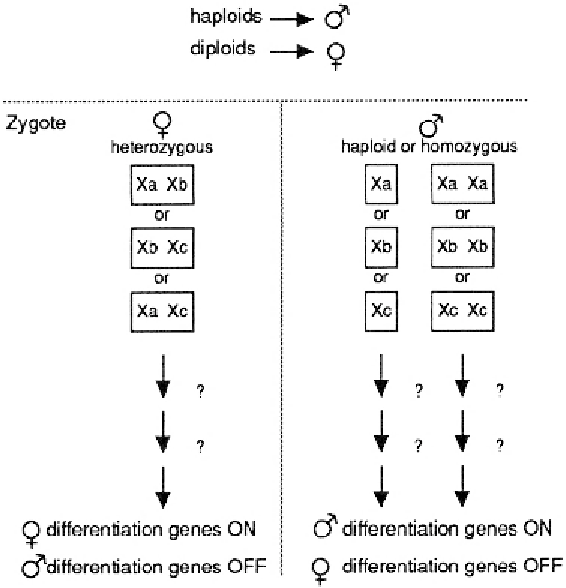Biology Reference
In-Depth Information
Figure 10.3
Multiple alleles at a single locus determine sex in the haplo-diploid hymenopteran
Athalia rosae
. Under normal conditions, males are haploid and females are diploid, with females het-
erozygous for the sex-determining locus (X), whereas males are hemizygous. If individuals become
homozygous for an allele of X, perhaps through inbreeding, they become diploid males. (Redrawn
from
Bownes 1992
.)
10.6.1 Intraspecific Variability
Within a single species, several different sex-determining mechanisms may occur
(
Dubendorfer et al. 2002
). Many populations of the house fly,
Musca domestica
,
have five pairs of autosomes and a pair of heterochromatic sex chromosomes;
thus, females are XX and males are XY (
Figure 10.4
). In these populations,
sex is determined by the presence or absence of the Y, which carries a male-
determining factor
M
; the X plays no important role in sex determination. In
other strains of
M. domestica
,
both
males and females are XX and have a spe-
cial autosome that may carry a male-determining factor
A
M
that determines sex.
The
A
M
component is located on different linkage groups (different chromo-
somes) in different populations. The presence or absence of the
M
factor seems
to be the primary signal for sex determination in these strains. Interestingly, in

